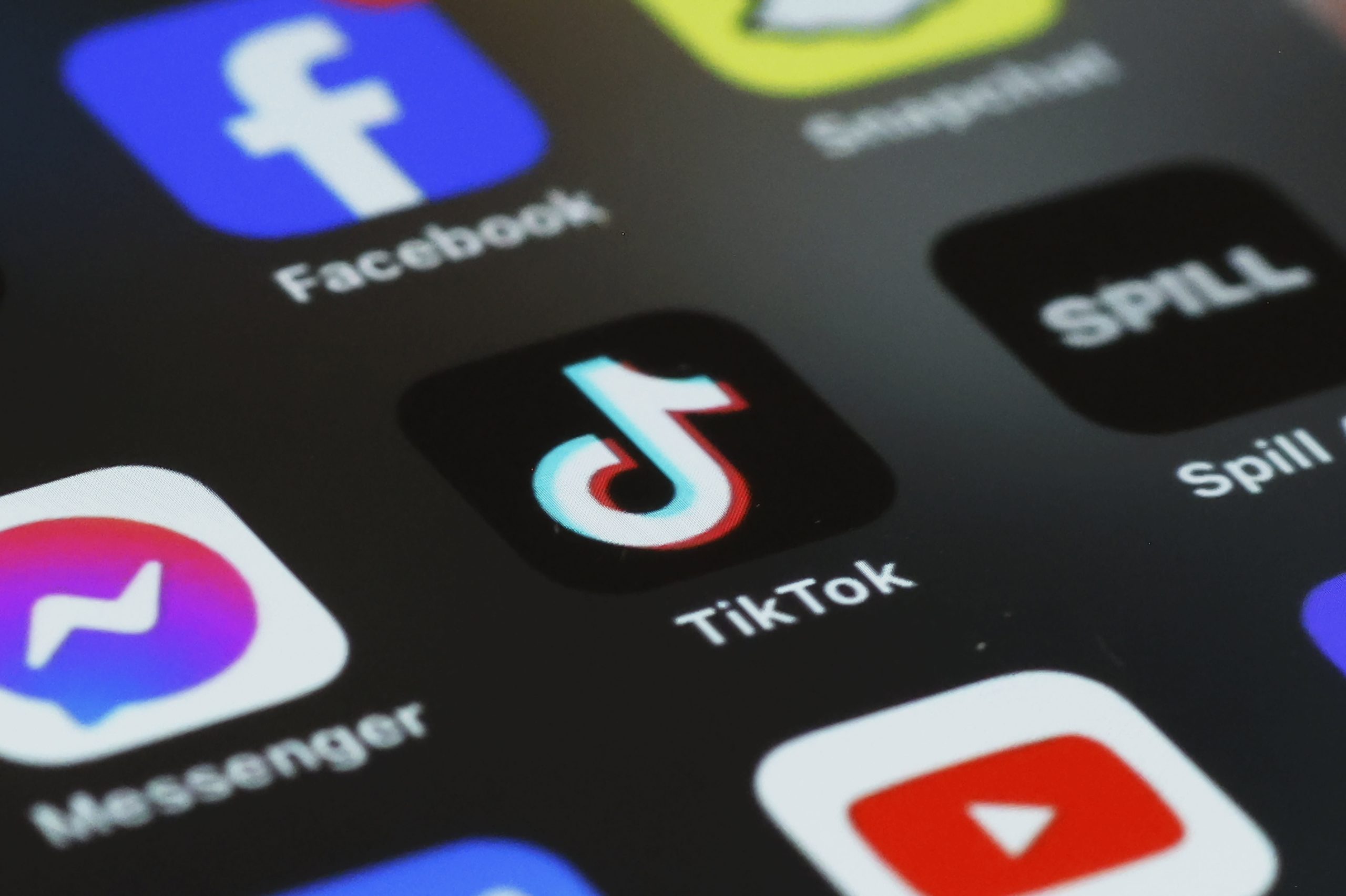Before Jack Nader started posting beauty videos on TikTok in 2023, he was working as a Starbucks
But after Nader, who’s now 21, started taking his videos seriously in April of that year, his TikTok account blew up. With more than half a million followers, he was able to generate enough income through brand sponsorships and his share of ad revenue that he quit his coffee shop gig and got his own apartment.
“This is my 9-to-5 job,” Nader, who said he makes between $1,000 and $12,000 per month as a creator, told CNBC. “This is what I do to make a living. This is how I pay for my groceries. This is how millions of small businesses make their money.”
Nader’s new reality, however, is far from stable. TikTok, which is owned by China’s ByteDance, is nearing a Jan. 19 deadline by which it has to be sold, or it faces a ban in the U.S. Like many other creators who have come to rely on TikTok, Nader has been urging his fans to find him on other social media apps before he potentially loses them altogether and the substantial income stream that they represent.
“Not everyone from my TikTok following is going to come over, and that’s really sad,” Nader said.
The TikTok risk has been present for years, but was amped up in April, after President Joe Biden signed a law that requires ByteDance to divest the short-form video app this month. If ByteDance fails to sell TikTok in time, AppleGoogle
President-elect Donald Trump, who favored a TikTok ban during his first administration, has since flip-flopped on the matter. Late last month, he urged the Supreme Court to intervene and forcibly delay implementation of Biden’s ban to give him time to find a “political resolution.” His inauguration is Jan. 20.
Trump’s rhetoric on TikTok began to turn after he met in February with billionaire Jeff Yass, a Republican megadonor and a major investor in ByteDance who also owns a stake in the owner of Truth Social
The Supreme Court heard oral arguments from both sides on Jan. 10. During the more than two-hour session, justices peppered TikTok’s head lawyer with questions about the app’s ties to China and appeared generally unconvinced by TikTok’s main argument, that the law violates the free speech rights of its millions of individual users in the U.S.
On Thursday, businessman Frank McCourt’s internet advocacy group Project Liberty announced it had submitted a proposal to buy TikTok from ByteDance. Calling it, “The People’s Bid for TikTok,” the group said it would restructure the app to exist on an American-owned platform and prioritize users’ digital safety, though it didn’t disclose terms of its bid.
A ruling could come at an point. Nader isn’t waiting for a resolution to figure out what’s next.
He’s currently downloading four or five of his TikTok videos each day to save them as he migrates his content to Meta’sAlphabet’s
“It took me over a year and a half to build the following that I have right now on TikTok to make it my full time job,” Nader said. “Now it’s kind of about rebuilding that entire brand on another platform, which is not ideal.”
Nader said he isn’t yet making any money from Reels or Shorts.
‘This isn’t just a silly app’
Danisha Carter, 27, is in a similar spot. A resident of Los Angeles, Carter has been a full-time creator since 2021, posting social commentary and lifestyle videos. Although she’d known about the TikTok ban for months, she said she had a wake-up call in the middle of the night in November.
“I need to start taking this seriously before I lose access to the platform that I built and the followers that I built,” Carter said, recalling her panicked realization. “I need to not waste any more time.”
Carter, who previously worked in luxury retail, has ended her TikTok videos by telling her followers that they can find her on YouTube, Instagram and Patreon.
“This isn’t just a silly app that people have been using to post dance videos,” said Carter, who makes about $4,000 per month on average from her TikTok activity. “It’s been remarkable in terms of changing people’s lives, changing people’s businesses.”
TikTok could still find a way to stay operational in the U.S., but if the app does get suspended, YouTube, Facebook and Instagram are poised to be the biggest winners in the fallout, experts predict.
TikTok has about 115 million monthly active users in the U.S., well behind YouTube at 258 million and Facebook at 253 million, according to market intelligence firm Sensor Tower. Instagram has 131 million. Short videos, the kind that mimic clips on TikTok, are gaining viewership across those apps, accounting for about 41% of user time on Instagram, Sensor Tower data shows.
While TikTok has a smaller userbase in the U.S. and lower share of total ad dollars than its top rivals, it’s the dominant platform for creators, particularly those focused on short-form content.
Influencer marketing platform HyperAuditor defines a creator as a user with over 1,000 subscribers. TikTok has nearly 8.5 million people in the U.S. who fit that category, compared with about 5.2 million on Instagram and 1.1 million on YouTube, according to HyperAuditor.
Meanwhile, TikTok accounts for 9% of digital ad spend on social media platforms in the U.S., according to Sensor Tower, compared to 31% for Facebook, 25% for Instagram and 21% for YouTube.
Should TikTok go away, “this equates to billions of dollars potentially up in the air for competitors to seize,” Sensor Tower told CNBC in an email. Emarketer estimates that Meta and YouTube could grab about half of the reallocated dollars should a ban go into effect.
That type of market shift has taken place elsewhere. India banned TikTok in June 2020, when the app had about 150 million monthly users in the country. A year later, Instagram’s monthly active users in India had increased by 20% while YouTube’s had gone up 11% year-over-year, according to Sensor Tower estimates.
“That’s when we saw the biggest jump in Reels utilization ever,” said Meghana Dhar, a former Instagram executive who was at the company at the time of the India ban. “Should TikTok get banned and creators have to scramble, between YouTube Shorts and Instagram, a lot of creators are already hedging their bets.”
At Meta, leaders within Instagram scheduled numerous impromptu meetings on Friday after listening to the oral arguments before the Supreme Court, a person familiar with the matter told CNBC. Though many within the company had long expected TikTok would remain active in the U.S., leaders at Instagram began directing their teams to prepare for a potential influx of users should the ban go through, said the person, who asked not to be named due to confidentiality.
Need to diversify
Kristina Nolan, vice president of media services at marketing agency DMi Partners, said the TikTok situation is the latest example of why social media creators should always be diversifying their followings.
“We’re consistently reminding them to create audience depth on other platforms,” said Nolan, whose agency works with more than 50,000 creators.
In recent weeks weeks, DMi has seen more of its creators start to migrate followers elsewhere in a variety of ways, Nolan said. But they have to be careful. Nolan said that some creators worry that TikTok will “shadow ban” them, or reduce their exposure to users, if the technology recognizes that they’re promoting profiles elsewhere.
Some creators will suggest followers find them on “fbook,” for example, rather than writing out Facebook. Others will bleep out just enough words to get the message to their followers while hoping to avoid TikTok’s detection, Nolan said. Some creators are teaming up with brands to incentivize users by holding prize giveaways for users who follow them on other apps, she added.
“They’re obviously not saying, ‘Come over to Instagram,'” Nolan said. “They’re like, ‘Go follow me on’ and they’re mouthing it.”
Even with multiple other options for finding large audiences, creators are worried about trying to rebuild their business and whether enough followers will migrate with them.
“Whatever is going to happen is going to happen, and we’re just going to make the most of it,” said Nealie Boschma, 27 of Los Angeles, who has been living as a full-time creator since 2022. “That’s just how I have to look at it, so I don’t panic.”
Despite the potential upheaval, Boschma, said she views the potential ban as an opportunity to expand her career and get more creative.
Boschma started making TikTok videos after quitting her job working on a horse farm, choosing to live off of her savings while experimenting as a creator. Boschma’s bet on herself worked and she’s earned enough to live in Los Angeles, paying for her own place and a car.
Now she’s making sure her TikTok fans see the links to her other profiles so they can find her on other apps, including YouTube. If the ban goes through, Boschma said she plans to make a video specifically asking her fans to follow her elsewhere.
It’s going to be quite a lift, as she currently has 2 million TikTok followers compared to just 278,000 on YouTube. But Boschma said she is going to try her hand at making longer-form videos, something she’s always wanted to explore.
“Whether TikTok goes away or not, I do think something will work out” Boschma said. “I’ll find my footing in other places, like I did on TikTok.”
WATCH: Supreme Court likely to uphold TikTok ban, says Christoff & Co. CEO Niki Christoff
International: Top News And Analysis
Read the full article <a href="Read More” target=”_blank”>here.


